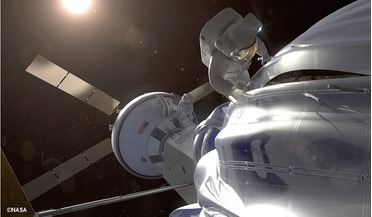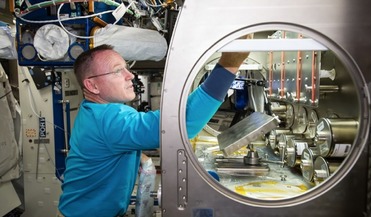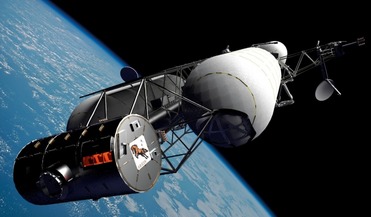 August 2020
Interplanetary spaceflight and restorative justice
August 2020
Interplanetary spaceflight and restorative justice
... the duration to eight and eventually 12 months. In contrast to a simulated Moon mission, real-time contact with Ground Control will be impossible for Mars missions. Analogue studies have given some indications of the psychological challenges that...
 April 2025
Maximising returns to Earth - the infinite potential of space
April 2025
Maximising returns to Earth - the infinite potential of space
... swift innovation of the private sector and focus on building a sustainable, forward-looking framework for Moon and Mars missions. Above all, he reminds us of the power of vision and the uniquely human drive to push beyond horizons - a drive...
 December 2014
Asteroid Redirect Mission: preparing for Mars in deep space
December 2014
Asteroid Redirect Mission: preparing for Mars in deep space
.... NASA envisions SEP as usable for moving large elements through deep space for future missions, eventually transporting cargo to support a human Mars mission. The commercial spacecraft industry is also interested in advanced SEP for use in their...
 August 2016
Space stations - drivers of cooperation
August 2016
Space stations - drivers of cooperation
... China’s splashed back into the ocean and the US made it only after losing quite a few Mariner Mars missions. On similar lines, ESA has established competencies in specific areas of planetary exploration, as has the Japanese Space Agency...
 January 2017
Mini space station for mice to study effects of reproduction in reduced gravity
January 2017
Mini space station for mice to study effects of reproduction in reduced gravity
...synergistic human exploration systems requiring increased autonomy such as medical care and vehicle health management to achieve Mars missions. Astronaut Nicole Stott, Expedition 20/21 flight engineer, working with the Mice Drawer System (MDS) in the...
 August 2020
Scorpion – a study of the possible
August 2020
Scorpion – a study of the possible
... if another Scorpion (or a specialist boost stage) contributes to the initial heliocentric injection, then Mars and Venus orbits could be within reach. The Mars mission would have sufficient payload for specialised landing systems that would enable...